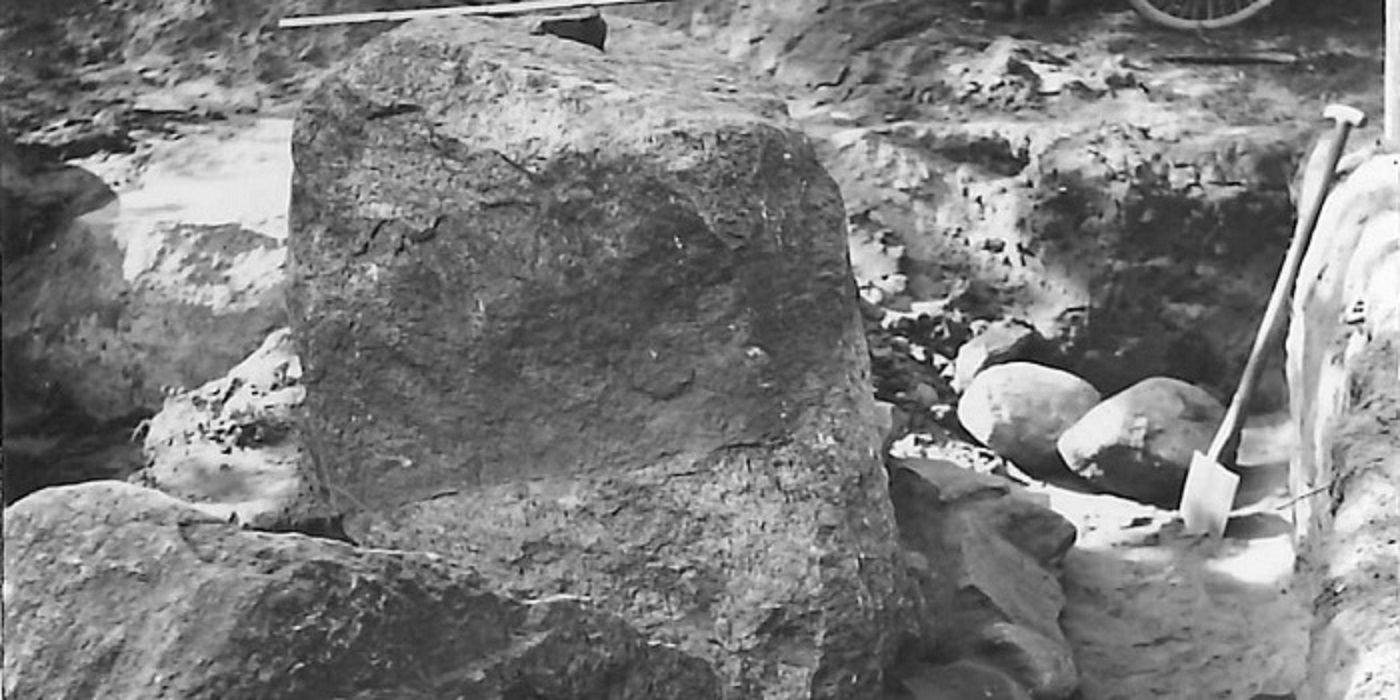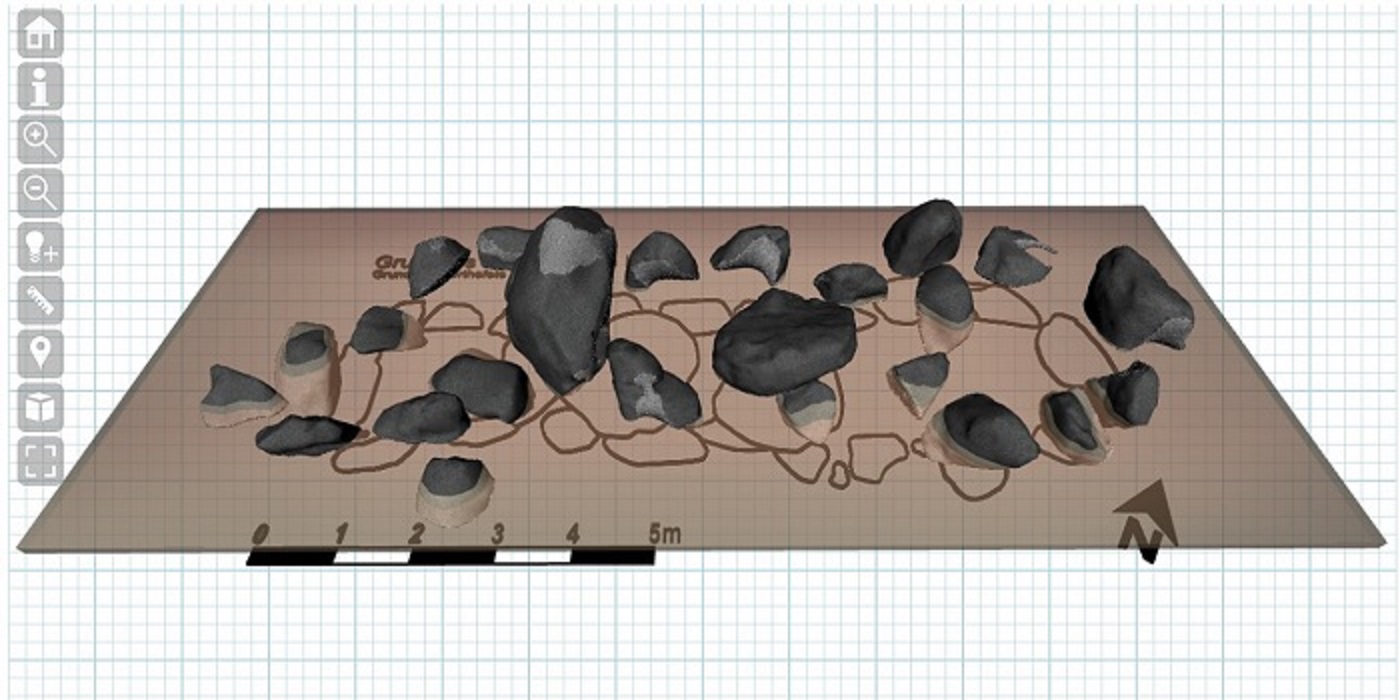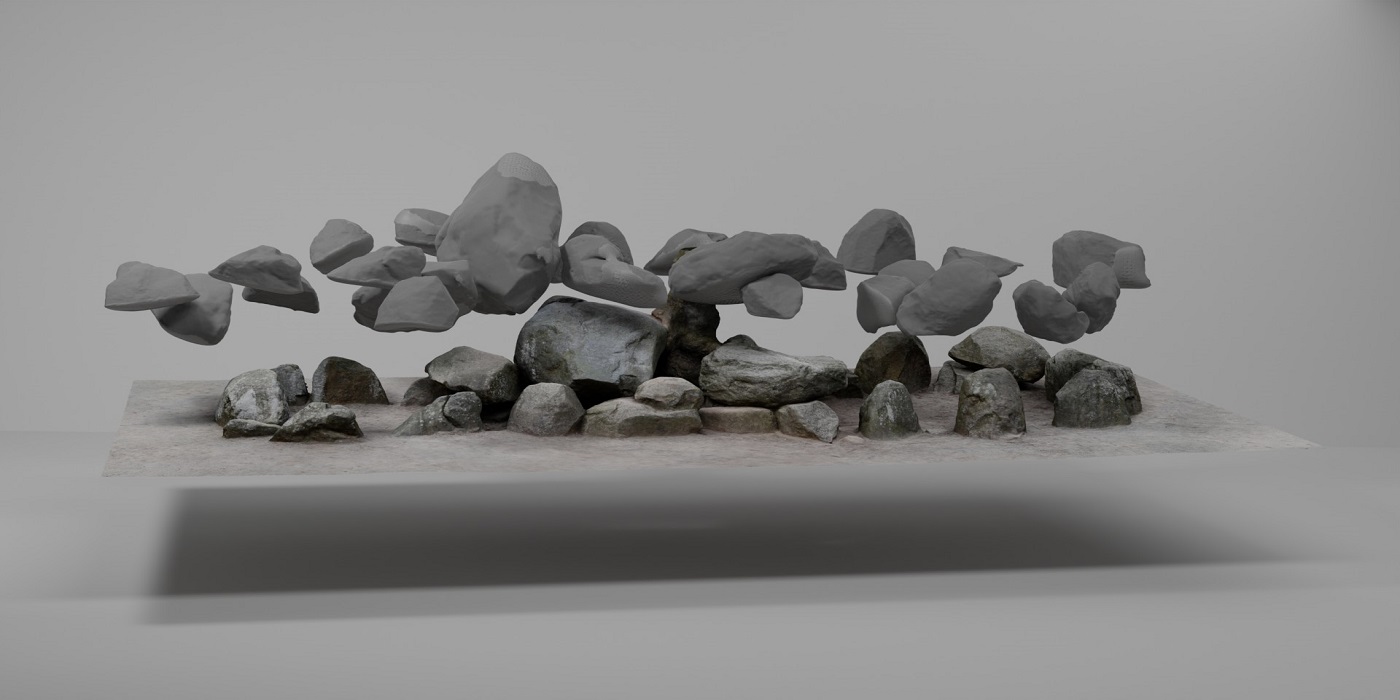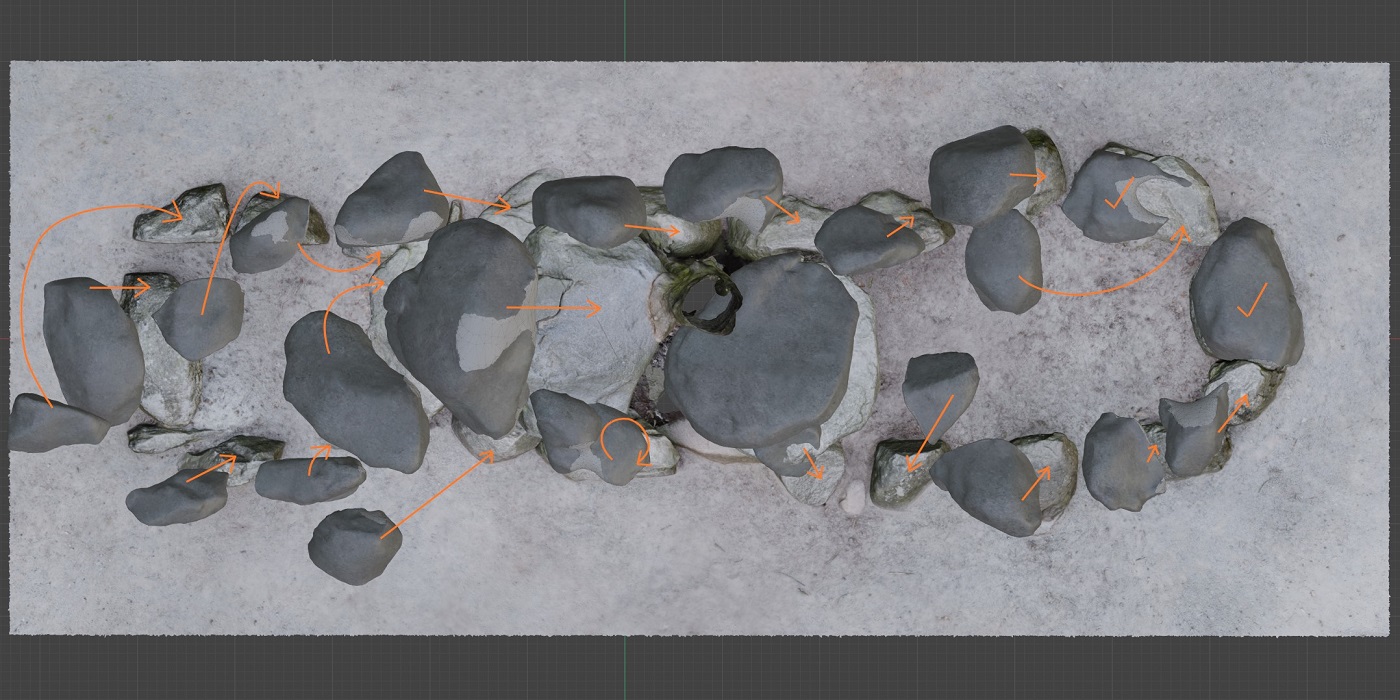
Reconstruction Düwelsteene before 1932
Reconstruction of the tomb before it was restored in 1932.

Reconstruction of the tomb before it was restored in 1932.

Excavation photo 1932 (LWL-Altertumskommission für Westfalen/Stieren)
After the excavation in 1932, which was conducted under archaeological supervision, the megalithic tomb was restored, and the stones were relocated and reconstructed according to the knowledge of the time. There are photographs of the excavation, and drawings of the megalithic tomb were made during the excavation. However, there are no precise records of where the stones were positioned before and during the excavation.
In order to reconstruct what the Düwelsteene might have looked liked before the restoration, a citizen science project was carried out. Heiden citizens were asked if they could provide pictures showing the Düwelsteene before the restoration. With the help of these photographs, the megalithic stones could be digitally reset to their position and the megalithic tomb can thus be seen virtually again in its original state before 1932.

3D model of the reconstruction before 1932
The 3D model of the Düwelsteene, which had been created by the 3D scan, was used to "cut out" each individual stone, so that these megalithic stones could now be moved freely. The gaps on the stones, which were created by taking them out of the 3D model, were closed by the Poisson Surface Reconstruction algorithm in the CloudCompare software. Through the citizen science project "Stone by stone back to the past. Citizen science supports the reconstruction of the megalithic grave Düwelsteene" of the LWL and the participation of the inhabitants of Heiden and the surrounding area, the pictures of the grave could be used for the reconstruction of the grave. The photographs were positioned in the 3D program Blender, so that the megalithic stones could be digitally "turned back" again.
further information on the reconstruction and the citizen science project
From todays 3D model to the model of 1932

Position of the stones today and before 1932
After cutting the stones out of the 3D model created by Image-based Modeling,
the
stones
were closed using the Poisson Surface Reconstruction algorithm in the software
CloudCompare.
Due to the change of the stoneshape, the megaliths also lost their
original texture (true color). After the repositioning with the help of the old
photographs in the 3D program Blender, the 3D stones of the tomb were
re-textured. To distinguish between the original surface of the megalithic
stones and the surface closed by the algorithm, the wireframe modifier was used
in Blender, so that the difference between reconstruction and original can be
seen clearly.
The texture used
for the
Düwelsteene.
On the basis of the in 2014 scanned 3D model, an orthophoto was also created, which serves as the basis for the floor plan drawing, which can also be seen in the model of the Düwelsteene today. By using the orthophoto, the floor plan is true to scale and distortion-free.














| Plane | Position | Flip |
| Show planes | Show edges |

On this website, archaeology enthusiasts and researchers can virtually view the Düwelsteene as a 3D model in the state in which the megalithic tomb is found today. The stones of the tomb are also visible as a 3D reconstruction, presumably as they were positioned before the 1932 restoration. Another virtual reconstruction shows the megalithic tomb of the Funnel Beaker Culture as it might have looked around 3000 B.C.
Directions to the megalithic tomb, information about the restoration of the tomb in 1932 and the current 3D digitizations by the Altertumskommission für Westfalen (LWL), information about the excavation history, as well as tales about the origin of the megalithic tomb and the origin of the name Düwelsteene.
AboutThis website visualizes the history of the Düwelsteene and is designed for the digital reconstructions of this megalithic tomb. Would you like to tell me your opinion about the website? Your feedback helps me to improve the website in form and content! To support you, I have provided a feedback form, which you are welcome to use. Thank you very much!
Feedback